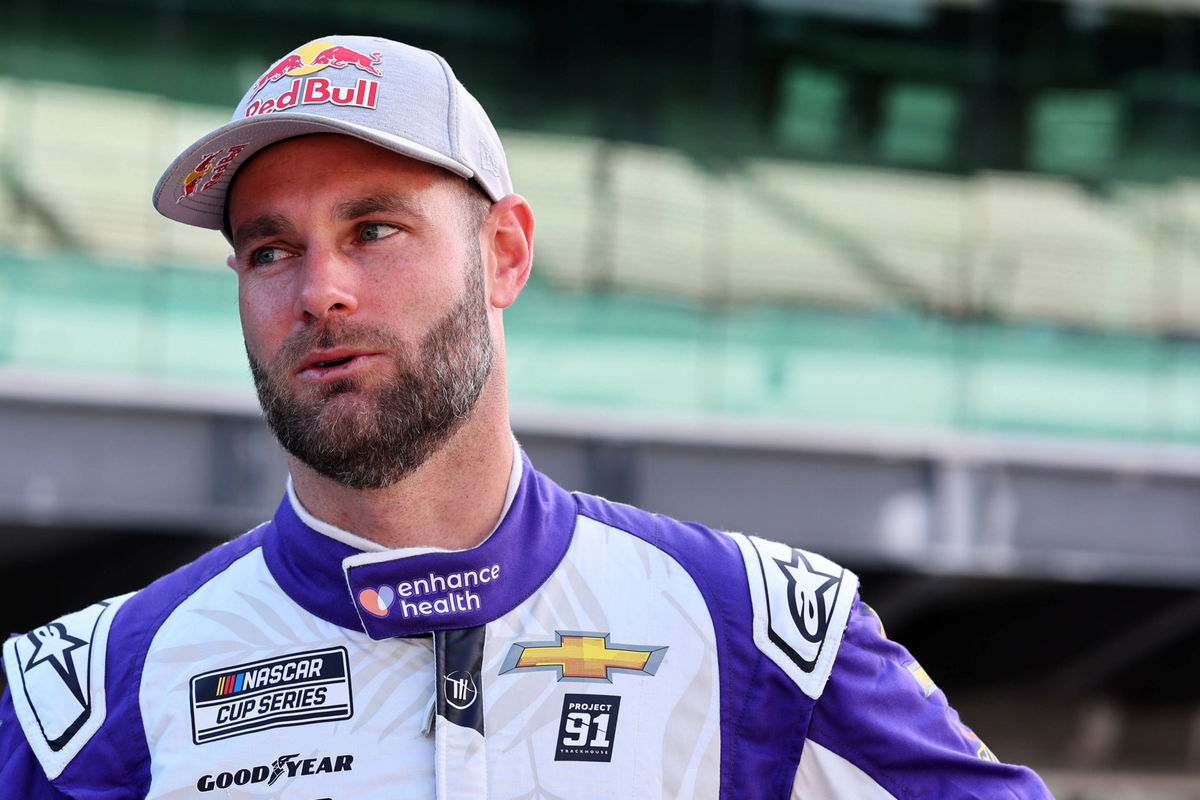
Imago
NASCAR, Motorsport, USA Cup Practice & Qualifying Aug 12, 2023 Speedway, Indiana, USA NASCAR Cup Series driver Shane Van Gisbergen 91 during practice for the Verizon 200 at the Brickyard at Indianapolis Motor Speedway Road Course. Speedway Indianapolis Motor Speedway Road Course Indiana USA, EDITORIAL USE ONLY PUBLICATIONxINxGERxSUIxAUTxONLY Copyright: xMikexDinovox 20230812_mcd_ad4_24 | Image Credits: Imago

Imago
NASCAR, Motorsport, USA Cup Practice & Qualifying Aug 12, 2023 Speedway, Indiana, USA NASCAR Cup Series driver Shane Van Gisbergen 91 during practice for the Verizon 200 at the Brickyard at Indianapolis Motor Speedway Road Course. Speedway Indianapolis Motor Speedway Road Course Indiana USA, EDITORIAL USE ONLY PUBLICATIONxINxGERxSUIxAUTxONLY Copyright: xMikexDinovox 20230812_mcd_ad4_24 | Image Credits: Imago
In case you’ve been living under a rock, Shane van Gisbergen has been lighting up the Cup Series with his road course prowess in 2025. He made history with a debut win at the Chicago Street Race in 2023 and has followed up with two more wins in a full-time seat in 2025. Hailing from New Zealand, this Trackhouse Racing driver brings a unique flair to NASCAR, drawing from his storied Supercars career. But he’s far from the only Southern Hemisphere driver to get a taste of stock car racing.
Watch What’s Trending Now!
Back in 2006, another Aussie, Marcos Ambrose, made a similar leap, battling through cultural and competitive hurdles to win at Watkins Glen in 2011 and 2012, proving international drivers can shine in NASCAR. He laid the foundation for guys like SVG, even so, the Kiwi’s path hasn’t been without its bumps, as he’s faced moments that tested his resolve. “It was a big move, but I’m loving the challenge. I’m really glad I made the decision,” van Gisbergen said during a media session.
In 2025, SVG is a three-time Cup Series race winner and a 3-time Supercars Series Champion. His pedigree is unmatched; however, it all could have gone the other way round if not for one fateful decision in 2013.
ADVERTISEMENT
Shane van Gibsergen’s inspiring rise to the top
When asked about the hardest period of his career, van Gisbergen didn’t mince words. “In 2012, at the end of that year, I was out of racing. I wanted to stop, and I sort of did stop,” he admitted to Jeff Gluck on the 12 Questions series. After Stone Brothers Racing (SBR) was sold and switched to Mercedes under Erebus Motorsport, the loss of Ford’s backing created major disruption, and SVG faced internal conflict. He found himself sidelined by a messy ownership change and legal battles, and things got nasty and personal.
SVG did not feel Mercedes was going in the right direction, saying, “I was right, they [Mercedes] ran terrible. And I just was like, I’d rather not race than drive for this sort of thing.” However, he was not open enough about his feelings, which led to his team speaking on his behalf, causing words to be twisted in a bad way.
ADVERTISEMENT
SVG continued, “I went about it the wrong way, because I was too shy publicly and let the team say all my words. They made out that I had depression, and they made out like I was backstabbing them and stuff. I was open with all the people, but the way it got twisted publicly sounded bad for me.” So, after such a traumatic experience, how did SVG recover?
Despite the off-track chaos, Shane van Gisbergen’s love for wheel-to-wheel competition never dimmed. He detailed the pivotal moment that saved his career. “Dad really convinced me to keep going, and we changed teams. It was a big legal s— fight, and I ended up joining another team,” he recalled. That team was Tekno Autosports, where limited testing time and a lean crew might have spelled disaster. Instead, Shane van Gisbergen responded by winning championships.
ADVERTISEMENT
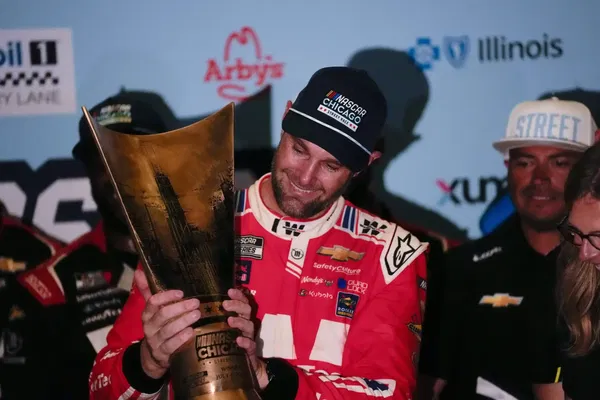
Imago
AP Photo/Erin Hooley
Winning the 2013 season opener in Adelaide with Tekno Autosports, after nearly walking away from the sport, proves that discipline can overturn the bleakest forecasts. Reflecting on that turnaround, he said, “There was so much outside noise…and then I went out and won the first race with a new team. It was messy but great.” That win propelled him into Australia’s Supercars spotlight, finishing championship runner-up in 2014. His move to Triple-Eight Engineering in 2016 changed everything, leading to three championships and multiple Bathurst 1000 triumphs.
SVG’s story is one of perseverance and dedication toward something you love. He was admittedly quite outspoken, but his driving did all the talking necessary, and that’s exactly why he fits so perfectly in the NASCAR setup. He might not be the most talkative driver, but he always says it as it is, and when it comes to his skills, he remains humble despite being arguably one of the greatest road racers NASCAR has seen.
ADVERTISEMENT
However, while his Supercars days are well behind him, he still feels NASCAR could learn a thing or two from the series.
Top Stories
France Family’s ‘Financial Deception’ Spilled Out in the Open as RTA Memo Exposes the ‘49%’ Lie
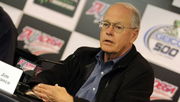
55-YO NASCAR Driver’s Untimely Death Shatters Racing Community
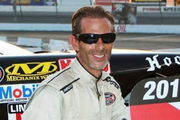
‘RIP’: NASCAR World Crumbles in Tears as 39-YO Former JR Motorsports Driver Passes Away
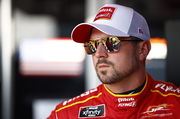
Dale Earnhardt & Tony Stewart Dethroned as SVG Shatters NASCAR Benchmark to Stand Alone in History
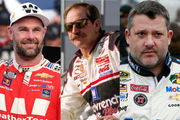
Michael Jordan Testifies Only He Can Save NASCAR From Itself, Kenny Wallace Agrees
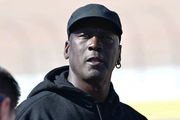
SVG feels NASCAR should adopt supercar safety features
In the aftermath of Cody Ware’s brutal, high-speed impact at the Grant Park 165 Chicago Street Race, Shane van Gisbergen didn’t mince words. The penultimate lap saw Ware lose his brake rotor and crash head-first into the tire barriers at a blistering 93 mph. The impact was scary, and many were fuming that NASCAR waited 35 seconds and only threw the caution after SVG took the white flag.
ADVERTISEMENT
Speaking with Claire B. Lang, Shane called the delay in throwing the caution “sickening,” and urged NASCAR to learn from international series. “I’m pretty sure in Supercars … the cars had like a G-sensor, or if you had a crash that was big enough, it would trigger that G-sensor to, you know, medical and probably race control. And maybe that’s something we need here,” he explained.
NASCAR removed “racing back to caution” in 2003 to freeze the field upon yellow. Yet the 35-second response gap in Chicago, the longest for a front-end collision since the Next Gen car’s 2022 debut, exposed a procedural blind spot. Mike Forde, NASCAR’s Managing Director of Racing Communications, confirmed the delay and pledged a full review of camera protocols and race-control standards. Van Gisbergen’s suggestion to integrate crash-severity sensors dovetails with NASCAR’s ongoing Next Gen safety enhancements. Offering a clear path to ensure no driver’s “need help” radio call goes unheard.
ADVERTISEMENT
ADVERTISEMENT
ADVERTISEMENT
ADVERTISEMENT

